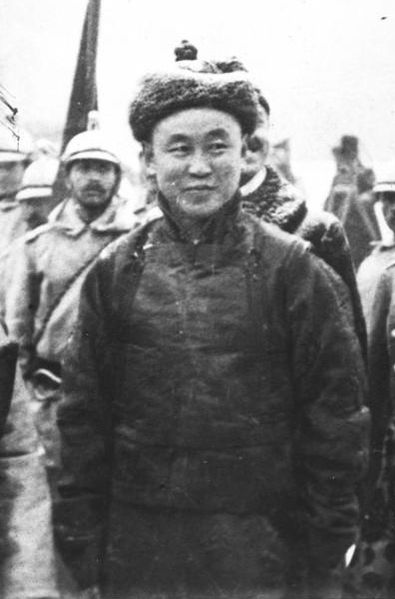Mongolian Revolution of 1911
The Mongolian Revolution of 1911 occurred when the region of Outer Mongolia declared its independence from the Manchu-led Qing China during the Xinhai Revolution. A combination of factors, including economic hardship and failure to resist Western imperialism, led many in China to be unhappy with the Qing government. When a new program to settle Mongolia with ethnic Han and assimilate the natives was unveiled, it was met with resistance that resulted in a relatively bloodless separation from the Qing Empire. Many Barga and Inner Mongolian chieftains assisted in the revolution and became the revolution leaders.
Anti-Chinese commanders Togtokh and Bayar in Khüree (now Ulaanbaatar)
Jebstundamba Khutuktu
Prince Namnansüren
The Russian Consulate in Khüree
Outer Mongolia was the name of a territory in the Manchu-led Qing dynasty of China from 1691 to 1911. It corresponds to the modern-day independent state of Mongolia and the Russian republic of Tuva. The historical region gained de facto independence from Qing China during the Xinhai Revolution.
Outer Mongolia and Inner Mongolia within the Qing dynasty.
After the Treaty of Kyakhta (North) Mongolia in 1915






